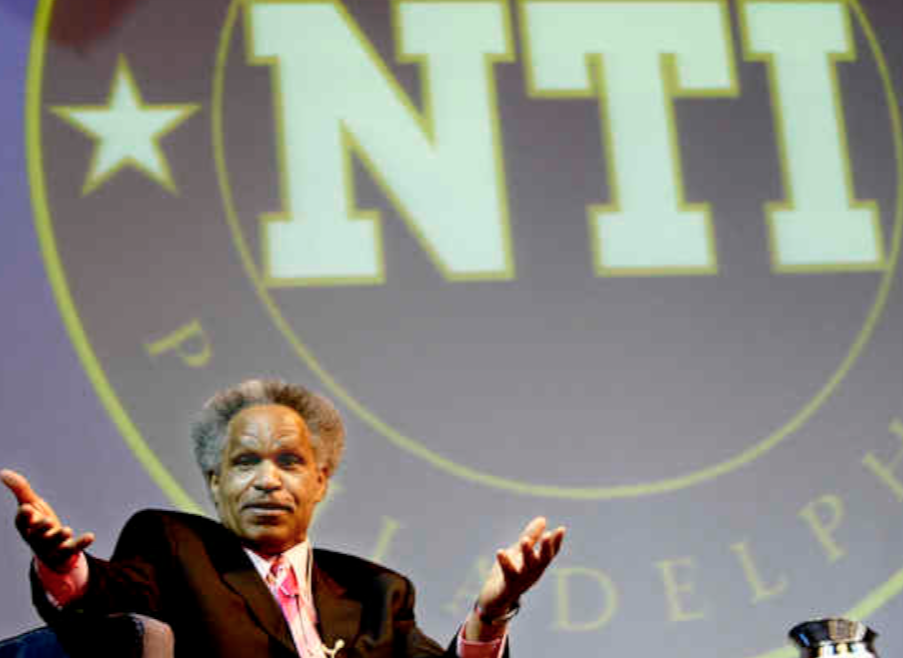Council President Clarke’s initiative: How to avoid NTI Jr.


The Council President has a plan.
He wants the city to support a multi-million dollar bond issue that, combined with other funding, will finance the development of many units of housing for buyers and renters at a range of income levels.
He wants a yet-to-be-created land bank to play a key role in aggregating government-owned parcels and assembling sites for housing construction.
Based on preliminary research, he says that there are opportunities to implement this approach within target areas in most City Council districts.
The Council President to which I’m referring isn’t Darrell Clarke; it’s John F. Street. And the plan summarized above isn’t the “1,500 New Affordable Housing Units Initiative” announced by Council President Clarke on March 17. It’s an anti-blight proposal that became a centerpiece of Street’s 1999 mayoral campaign and was launched as the “Neighborhood Transformation Initiative,” or NTI, following Street’s election.
Not many people remember NTI fondly because—to put it diplomatically—the results achieved fell far short of expectations. The 1,500 New Affordable Housing Units Initiative has a certain resemblance to NTI–it’s kind of like NTI Jr. Unfortunately, the plan also has NTI-like flaws and, if launched, is likely to produce an NTI-scale failure.
What was so bad about NTI—and what’s so bad about Council President Clarke’s initiative? Three things, to begin with.
No one’s in charge.
Throughout the NTI years (2001-07), the Street Administration never got around to deciding which of the alphabet-soup development agencies would lead the Neighborhood Transformation Initiative. We don’t know who’s going to be in charge of President Clarke’s initiative either. Although the plan released this week is documented with narrative, maps, and cost benefit calculations, there’s no explanation of which municipal department will be in the driver’s seat. And, since no one in the Nutter Administration was consulted in advance about the plan, no one else in city government is in a position to answer this question either.
Something for everyone.
In 2001, after the Street Administration and City Council failed to agree on an approach for targeting NTI dollars, the administration agreed to carve up a major portion of the budget to fund property acquisition priorities that would be identified by district councilpersons. Because elected officials are not necessarily good project managers, lots of money went unspent as a result of this policy decision.
The plan presented by Council President Clarke includes pages of maps illustrating “Opportunity Zones,” described as “areas within the City that contain a sufficient number of publicly owned properties to effectively implement this Initiative.” Although hypothetical Opportunity Zones are shown in six of the ten Council districts, the plan doesn’t include an explanation of how target area designations will be finalized and priorities set. There’s not enough money in the plan to produce high-impact results in every Council district—or even in six of them. But the plan narrative doesn’t explain how available resources are going to be allocated and how the tough decisions about targeting and priority setting are going to be made. A something-for-everyone approach didn’t work for the Street Administration, and it won’t work for NTI Jr. either.
Community-Free Community Development
The Street Administration decided that NTI implementation should be guided by neighborhood-specific investment plans. However because no real neighborhood planning had been completed prior to the roll-out of NTI, NTI funding became available—and got spent—without any substantive agreement on how to allocate it responsibly. The result: a series of projects got financed, but no neighborhood got “transformed.”
The prospectus released by Council President Clarke on March 17 has nothing to say about a community planning and civic engagement process that gets community members involved in a dialogue that leads to agreements on how to achieve a balance between affordable housing and market-rate housing production and preservation in emerging neighborhoods. Community leaders were present at the press conference—but a press conference isn’t the same as a plan; and, without a plan supported by civic engagement, the ambitious goals of this initiative won’t get achieved.
Realistically, it won’t be possible to implement a policy with as many moving parts as Council President Clarke’s initiative until the first years of the next mayoral administration. The presentation of the “1,500 New Affordable Housing Units Initiative “may have been intended to provide an example of what a Clarke Administration could do for Philadelphia’s neighborhoods in the future. But the public would be better served if the Council President took advantage of opportunities to demonstrate his powers of leadership now, during the remaining months of the Nutter Administration.
Specifically, Council President Clarke could play a key role in achieving three important goals for Philadelphia neighborhoods in 2014 and 2015.
Getting the land bank up and running.
Westmoreland County’s land bank is now operational. Dauphin County’s land bank has been doing business for a year. If Philadelphia’s land bank were in business now, we could be removing houses located in the proposed Opportunity Zones from the Sheriff Sale lists and assigning them to pre-qualified developers–we could be doing that right now! The Council President could play a key role in getting a business plan for the land bank designed, finalized, and approved, so that land bank powers could be put to use before today’s property-acquisition opportunities pass us by.
Implementing the Blumberg Neighborhood Plan
If the participants in the March 17 press conference really wanted to take action to produce an appropriate mix of affordable and market-rate housing in a changing neighborhood, they should start working together now to get the Philadelphia Housing Authority’s master plan for the neighborhood surrounding the soon-to-be-demolished Blumberg high-rises fully implemented—not just endorsed, but executed on a block-by-block, property-by-property basis.
If master plan implementation were to be made a top priority, then the target area established by PHA (Cecil B. Moore Avenue to Girard College, 20th to 27th Street) could evolve into a mixed-income transition zone between the gentrifying neighborhoods to the south and the much more disinvested blocks to the north of this target area. Committing available funds and finding new money to support the preservation of existing, occupied housing in the target area while providing incentives for affordable and market-rate development of vacant sites would be a winning combination. Why not show that you can get the job done in the Blumberg target area rather than launching a completely new idea and leaving the Blumberg only partly implemented?
Agree on a Philadelphia Neighborhood Wage Rate
At the press conference, it was announced that “the Philadelphia Building and Construction Trades Council has agreed to offer an unprecedented reduced rate to the City of Philadelphia in order to spur construction and development of the housing units for the initiative.” A change like that would be a big step in the right direction—but why wait for the 1,500 New Affordable Housing Units Initiative to make it happen? Wouldn’t it be even better if the building trades agreed that, for construction projects in Philadelphia neighborhoods, union wage rates would be held at the same level as the rates that the building trades currently accept for suburban projects?
If such an agreement had been in effect prior to this year, then a union contractor might have been able to bid competitively on Northwest Philadelphia developer Ken Weinstein’s conversion of the former St. Peter’s Episcopal Church into a private school. Instead, when a neighborhood-based contractor got the job, IBEW Local 98 picketed one of Weinstein’s retail businesses and inaccurately claimed that “the electrical contractor pays his workers a shameful $10 to $14 an hour with no health benefits whatsoever”(in fact, the electrical subcontractor for Weinstein’s project pays an average hourly wage of $27, with health benefits and vacation). With a neighborhood wage rate, we’d be more likely to see more union contractors working on more community development projects across the city.
Council President Clarke remembers NTI well; as an aide to then-Council President Street, he had played a key role in initial planning for this policy, and he knows why NTI failed to deliver. With responsible, focused political leadership, a modified future version of Clarke’s initiative could produce some of the results he’s seeking during the next administration. But why wait for the next administration? Why not demonstrate the leadership that’s needed now in order to address today’s top priorities?
As the City of Philadelphia’s Director of Housing from 1992 to 2001, Kromer supervised the expenditure of more than a billion dollars in public investment in support of housing preservation and development activities that improved living conditions for thousands of Philadelphia families. The perspective gained through this experience is described in his most recent book, Fixing Broken Cities: The Implementation of Urban Development Strategies.
WHYY is your source for fact-based, in-depth journalism and information. As a nonprofit organization, we rely on financial support from readers like you. Please give today.



